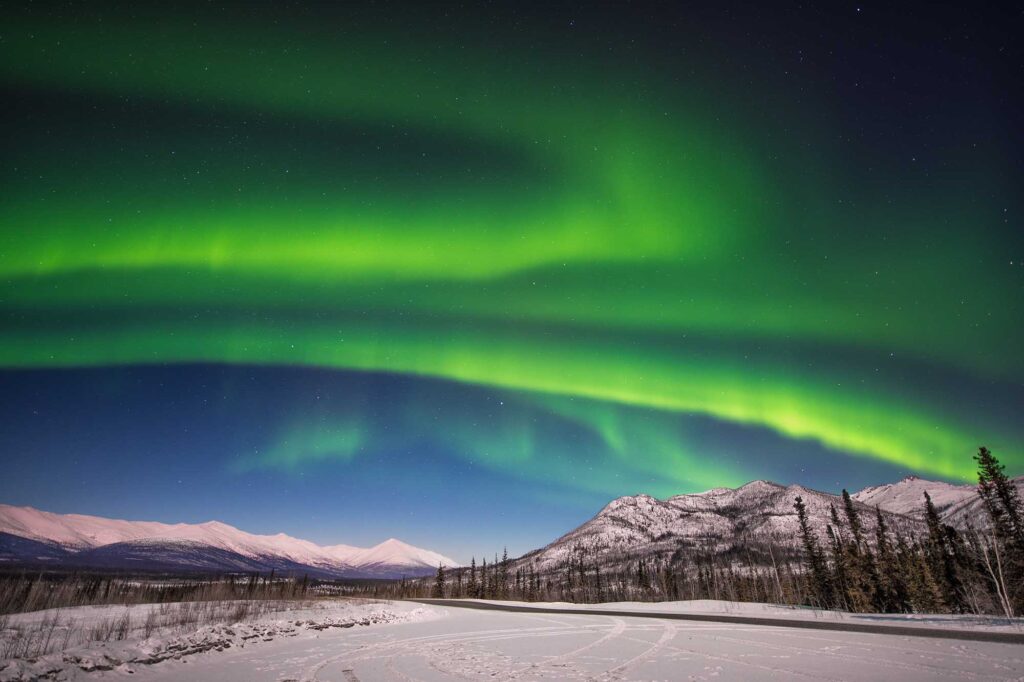Not a big fan of the heat? Can’t wait for the first snowfall? If you like cold weather here in the US, all you have to do in most cases is move north. All but one of the coldest US cities are found in the Upper Midwest, where frequent Arctic blasts make winters more brutal than the rest of the country, with some of the coldest temperatures outside of Alaska!
Below, we’ve listed the 10 coldest US cities and talk a little more about why the Upper Midwest can get so much coldest than the rest of the country. To develop our rankings, we used climate data using the average low temperature from the coldest month in each city.
What are the Top 10 Coldest US Cities?
If we included every small town in this list, it would be dominated by Alaska’s Arctic communities, whose extreme temperatures during the winter are well known. However, we’ll consider a city as any location with more than 10,000 people for our list.
- Fairbanks, Alaska: -16.9° F average low temperature in the coldest month
- Grand Forks, North Dakota: -3.1° F
- Williston, North Dakota: 0.1° F
- Fargo, North Dakota: 0.1° F
- Duluth, Minnesota: 1.5° F
- Aberdeen, South Dakota: 1.5° F
- St. Cloud, Minnesota: 1.8° F
- Bismarck, North Dakota: 2.2° F
- Marquette, Michigan: 5.2° F
- Huron, South Dakota: 6.6° F
Fairbanks is Alaska’s largest city, so it’s no surprise it leads our list by a wide margin. But the following three coldest US cities are all in North Dakota, a state known for its cold in the dead of winter.
Why North Dakota is So Cold

Many of the coldest US cities are found in North Dakota for a reason. The state can see cold temperatures year-round, thanks to its northern latitude. Average low temperatures fall to near or below zero during the night during the winter months, and temperatures can stay below freezing for days. The coldest temperature ever recorded in the state is a bitterly cold -60F.
Cold air masses from the Arctic can quickly sweep into the region, making lows below zero frequent in winter. Large high-pressure systems over northern Canada compress cold air and push it southward, with less chance to moderate before it reaches the upper Midwest.
North Dakota and Alaska are not alone in being cold: South Dakota, Northern Minnesota, Northern Wisconsin, and even the Upper Peninsula of Michigan see equally cold winter weather. Montana also holds the record for the coldest temperature recorded in the Lower 48: -70F!
North Dakota Gets Very Hot, Too
As cold as the state is during the winter, it can get brutally hot in the summer. Some of the nation’s warmest temperatures happened here: the state record high is 120°F, set in 1936. Daytime average temperatures in the 90s in the Dakotas during July and August, the warmest times of the year.
Alaska’s Cold Comes Straight from the Arctic

Alaska is the coldest state in the country, and it has even more frigid weather than most of Canada. To be clear, not all parts of Alaska get that cold, and it varies from place to place based on how far south you are, how cold the wind is blowing from, and other factors. But Alaska’s coldest cities tend to have more in common with northern Canada than they do with most of the US.
This is due to the state’s proximity to the Arctic Circle. It’s cold enough in Alaska for permafrost to exist, and cold air from the Arctic frequently sweeps south, even in the warmer months. A hot summertime day in Alaska would be considered an average summer day in most of the lower 48 United States.
Prefer warmer weather instead? You might want to check out our list of the warmest cities in the US instead. Or perhaps you like the cold with snow, we’ve also got a list of the snowiest cities, too. Got an idea for a future list? Leave us know in the comments.
Experience the fascinating world of weather with the second edition of Weather Watch: An Introduction to America’s Weather and Climate. This book doesn’t just explain weather and climate concepts—it brings them to life.
Weather Watch is perfect for teenagers and adults who wish to deepen their understanding of the dynamic world of meteorology. Simplifying the complex, this book breaks down the science of weather into smaller, easily digestible concepts, allowing you to build on your knowledge with each chapter.
Here’s what to expect:
- Detailed insights on clouds, pressure and wind, reading weather maps, hurricanes, and tropical storms
- Enlightening discussion on climate change
- Essential guidance on purchasing a weather station
- Critical information on severe weather and tornadoes
- Learning how to forecast the weather yourself
This second edition comes completely reformatted with over 30 pages of new content, including advanced weather map analysis and space weather. It’s more visually appealing with additional illustrations and graphics. Each chapter now ends with handy links for more in-depth learning, and sprinkled throughout the book are captivating American weather events, serving as real-life illustrations of introduced concepts.



